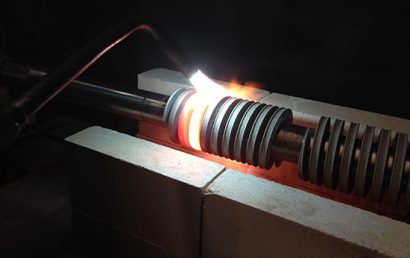Renewable Energy Applications for Protective Coatings
Because of the depletion of fossil fuels and, moreover, concerns about environmental impact, in the last several decades, much attention has been gained by renewable energy sources. Providing renewable energy at a competitive price is the basis for unparalleled research, as of late. In renewable energies conversion, the application of coating technologies has become a major role player. One characteristic that contributes to their prime importance: these technologies are cost-effective.
For achieving various functions, simple spray and paint methods, chemical vapor deposition, and PVD (physical vapor deposition) are used in the renewable energy industry. Functions can be as advanced as self-cleaning and spectral selectivity or as basic as conventional device protection.
Using Thermal Spray
Protective coatings are applied (through a thermal spray process) because they alter the surface properties of components through an effective, low cost method. Additionally, they can display desired properties through the fabrication of multilayer stacks. Applications that make good use of coatings applied through thermal spray are marine turbines, aircraft engines, automotive systems, and more. Though the gas and oil industries have made good use of thermal spray coatings as well, renewable energies – having become the preferred method of generating energy in a going-green era – are picking up where they left off. Though thermal spray coatings now serve any number of advanced purposes, initially, the renewable energy industry used them for simple corrosion/erosion protection.
As you can well imagine, erosion and corrosion are major issues in this industry. The problems they cause are significant. And on a more advanced level, thermal spray techniques have the ability to alter coating properties with applications such as detonation spraying and plasma spraying. This makes thermal spray a valuable commodity in applications such as TPV (thermal photovoltaic), photocatalytic hydrogen production, and thermal electric power generation.
The Weak Spot in Renewable Energy Technology
Seemingly, everything has its Achilles’ heel. When it comes to wind, solar, or some other technology involved in renewable energy, a critical component is the electronics. Unfortunately, it is also the Achilles’ heel. And it has nothing to do with faulty or lesser boards and components being used in the electrical assemblies. That is not the case. Only the best integral electronics are used for data analysis technology, transmission, and sensor technology. No, the problem lies with mother nature.
The environment in which renewable energy components work is harsh and unforgiving – downright hostile, in fact. Few things, if any, can be expected to run trouble-free for decades when subjected to the kind of conditions that renewable energy components are expected to perform under. When the question was posed: in order to make longer life a reality for renewable energy components, how do we protect these highly sophisticated, densely populated electronics (?); the answer came back: specialty coatings systems. Thus, thermal sprayed protective coatings was introduced to the renewable energies Industry.
Wind Turbines, As an Example
To better understand the concept of thermal sprayed protective coatings and the renewable energies industry, let’s take a closer look at how protective coatings and wind turbines relate. Wind turbines have within them as many as 8000 different parts. This can include power systems, electronic control systems sensors, generators, power systems, gearboxes, and more. Every one of these must operate with and be able to stand environments specific to their location, temperature extremes, constant vibration, and limited maintenance opportunities (due to limited accessibility).
Not only do these parts need to be protected from the stress of the environment, manufacturers decided that whatever method of protection was used could not add weight of a significant level. Fortunately, thermal sprayed protective coatings can offer protection against conditions that range from hot and arid to harsh winds and salt water. Certain protective coatings are even impervious to various types of hostile gases, such as methane.
Weather, and thermal changes are the worst enemies of components involved in renewable energies and thermal spray protective coatings are their salvation. If you would like to delve further into what thermal sprayed protective coatings can do for the renewable energies industry, or other industries, do not hesitate to contact us at A and a Coatings. We would be happy to discuss with you the multiple benefits of thermal spray.




